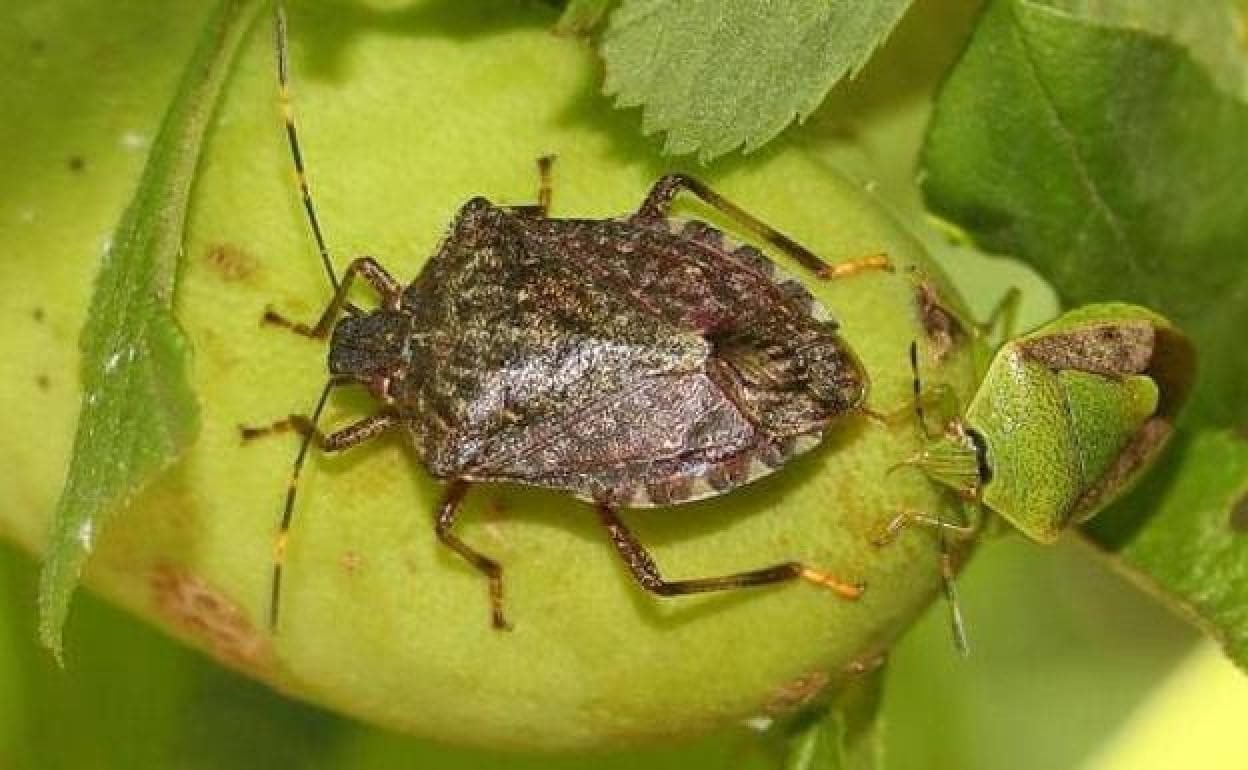

Sections
Highlight

Almudena Nogués
MALAGA.
Wednesday, 2 November 2022, 17:37
Even the name is off-putting: the brown marmorated stink bug. It comes from Asia and first appeared in Spain in 2016, when there was a plague of them in Gerona. Since then this unusual insect has been found in different places, especially on coastal towns in Catalonia and in the Basque Country, where the numbers have increased significantly recently. And it seems that Andalucía is no exception: Anecpla, the National Association of Environmental Health Companies, is warning that these bugs which give off an unpleasant odour when threatened have found their way here.
“Like other invasive species, they probably arrived in the form of eggs amid cargo and have developed here,” Anecpla’s director general Jorge Galván told SUR.
This is another effect of global warming. “Climate change means that a habitat which at one time would not have been suitable for certain species attracts them now. The climate in southern Spain is becoming more tropical and the rise in temperatures makes it suitable for species that didn’t used to come here. Their breeding seasons are also longer and more frequent, so the numbers are increasing,” he explained.
During the autum the brown marmorated stink bug (Halyomorpha halys) looks for places to hide for the winter and then comes out again in spring to feed and reproduce. That’s why at the moment they are more visible in urban areas, in houses, gardens, terraces and agricultural land.
How to recognise them? Their shield-like shape and their colour are the first clues. They have three pairs of legs and two antennae per segment in different shades of brown and beige, and if they feel threatened they release a strong smell which humans hate, although it is not dangerous to public health (these bugs do not transmit diseases).
They are, however, harmful to agriculture. They feed on a large variety of plants and are responsible for the loss of some crops, as well as living at the expense of other species. Anecpla recommends that farmers use preventive methods in areas where these bugs have been seen, “because that is more effective and has a lower biological impact”.
Publicidad
Publicidad
Publicidad
Publicidad
Esta funcionalidad es exclusiva para registrados.
Reporta un error en esta noticia

Debido a un error no hemos podido dar de alta tu suscripción.
Por favor, ponte en contacto con Atención al Cliente.

¡Bienvenido a SURINENGLISH!

Tu suscripción con Google se ha realizado correctamente, pero ya tenías otra suscripción activa en SURINENGLISH.
Déjanos tus datos y nos pondremos en contacto contigo para analizar tu caso

¡Tu suscripción con Google se ha realizado correctamente!
La compra se ha asociado al siguiente email
Comentar es una ventaja exclusiva para registrados
¿Ya eres registrado?
Inicia sesiónNecesitas ser suscriptor para poder votar.